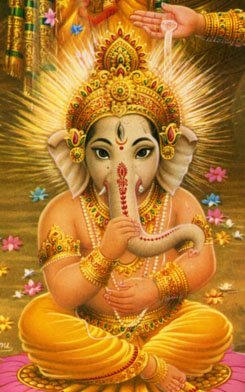Chronicles of a lone blogger - 5

The sempieternal form of the Lingam symbolizes the primordial form of the omni present, omni potent and omniscient formless (arupa) Eternal Creator from which everything merges or dissolves. According to Saiva sidantham (which is based on the doctrine of Pathi (Paramatma), Pasu (Jeevatma) , Paasam (Delusion) ), the Eternal Creator or Pathi is formless (arupa) . But for the sake of the Pasus, he has taken the form of the Lingam which is considered to be both formless and form (arupa-rupa). The Lingam is also called as the Sada Shiva Murthi. Lord Shiva has also taken 25 other forms called the Maheshwara Murthis.
As I see the Lingam, images of past sins inundate me from all sides. As I spread the sacred ash on my forehead, a pellucid picture of my final moments on planet earth flash before my eyes. Besieged by volatile gushes of repentance, newly born droplets of tears trickle down my chin, washing away my sins. As I walk out of the garba-giraham, I make a plethora of resolutions conceiving a new beginning to life - a life that is meaningful. But do I stick to it is a different question :P lol.
As we come out of the garba giraham, we head to the navagrahas which is located on the left hand side. After circumbulating the navagrahas, I head alone to visit my dear friend. My dear friend is none other than a Pillayar statue which is next to the navagrahas.

I always had a soft corner for this particular Pillayar. He has been sitting all alone in complete darkness, deprived of proper robes and food for so many months and wears one old dirty white robe. Inorder to make sure I dont go empty handed, I buy him a ghee lamp. As I light the lamp and give a pat on his thoppai (stomach), I see golden beams of light gently caressing His obscured eyes :).
(The journey continues..)



